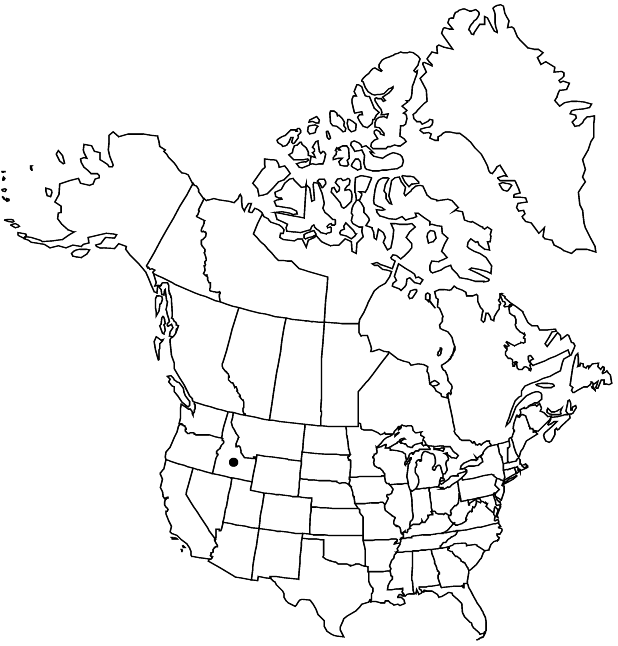Douglasia idahoensis
Brittonia 33: 52, fig. 1. 1981 ,.
Plants loosely cespitose mats with branched caudex. Stems prostrate to ascending, with terminal, green leaf rosettes. Leaves erect, reflexed in age, succulent; blade oblong to oblanceolate, 7–10 × 1–2 mm, margins entire, apex acute or obtuse, surfaces puberulent, glabrescent, hairs simple. Scapes 1–6 mm, elongating little in fruit, hairy, hairs simple and forked. Inflorescences 2–7-flowered, bracteate; bracts 5–9, lanceolate to ovate-lanceolate, 2.5–0.7 × 0.7–1.2 mm, with scattered, simple hairs. Pedicels 3–7 mm. Flowers: calyx 4–7 × 2 mm, with simple hairs; corolla pink to magenta with yellow throat, limb 10–12 mm diam., lobes 3–6 × 4 mm, margins emarginate or entire. 2n = 36.
Phenology: Flowering mid summer.
Habitat: Gravelly soils, subalpine
Elevation: 2000-3000 m
Discussion
Douglasia idahoensis is known only from a narrow region of northern Idaho. Its fleshy leaves and multiflowered inflorescence are distinctive. Morphologically and geographically, it is closest to D. laevigata; molecular genetic analyses show a closer relationship to D. montana. The single chromosome count of n = 18 for this species is somewhat questionable because it represents an anomaly for the genus, which typically has a base number of 19; this count should be verified.
Selected References
None.
